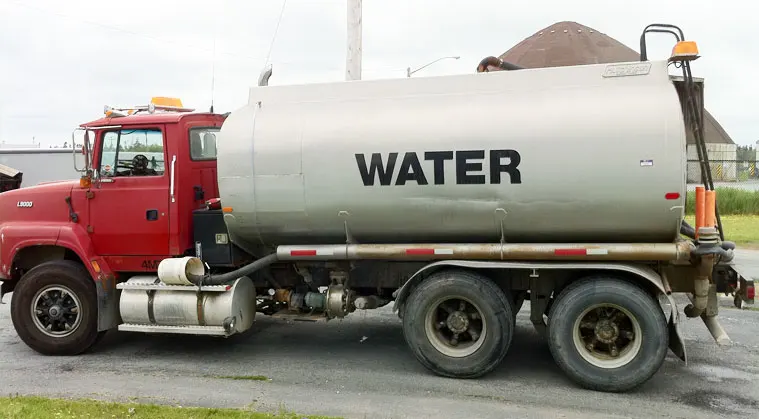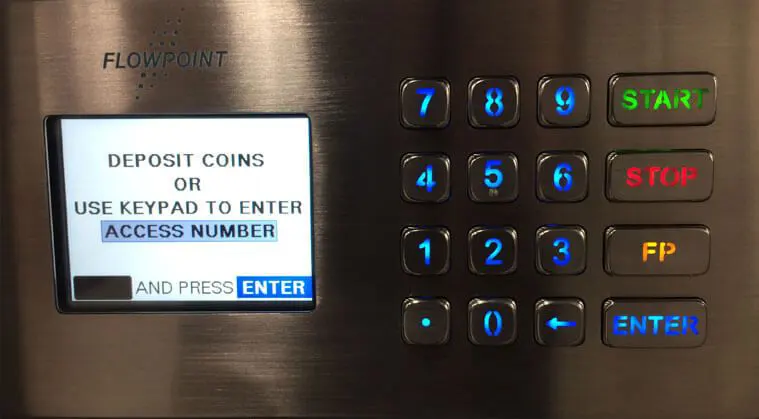Reclaiming Our Water
To waste an already scarce commodity on things like golf course irrigation or dust control on a construction site is irresponsible.
Drought conditions in Texas and California have further compounded the water scarcity issue, forcing many communities to consider reclaimed water as an alternative.
Reclaimed water has been given an unfair reputation thanks to the vivid but slightly inaccurate slogan, “ toilet to tap.”
Reclaimed water is highly treated wastewater effluent from a wastewater treatment plant.
It is typically discharged back into a river. Still, in many communities, a portion is reclaimed, put in tanks, and piped out in “purple pipes” for irrigation, manufacturing, cooling, and other non-potable uses.
Austin Water, based out of Austin, Texas, began providing reclaimed water in 1974, and since that time, the system has grown considerably.
In fact, Austin Water’s current system comprises approximately 51 miles of reclaimed water transmission mains.
Currently, the City of Austin recycles 3-5% of its wastewater effluent, depending on the weather. Austin’s Water Reclamation Initiative (WRI), or its wastewater recycling program, is integral to the City’s water conservation program and has saved approximately 1.1 billion gallons of drinking water in 2014-15.
Future plans for the system consist of more than 130 miles of transmission main and more than 8 billion gallons used annually.
The reclaimed water in Austin’s purple pipes comes from the Walnut Creek Treatment Plant in east Austin.
While it’s not for drinking – it is clean and can be used for irrigation and landscaping, as well as for cooling towers and flushing toilets.
It’s estimated that some air conditioning systems will consume as much as 50 percent of the drinkable water that flows into buildings.
Austin Water is planning for a new $4.7 million reclaimed water line to feed the state capitol complex, portions of The University of Texas campus, and four Travis County buildings along Guadeloupe Street.
By actively incorporating reclaimed water use into municipal, county, and state buildings, Austin is rapidly becoming the role model other municipalities can aspire to.
“We will save almost 12 million gallons of water a year, and the piping will pay for itself in a little over six years, and after that, taxpayers will be saving over $150 thousand annually, just from these four buildings,” said Travis County Commissioner Brigid Shea.
Shwetha Pandurangi, Austin Water’s Reclaimed Water Project Manager, recently reported, “The City of Austin is proud to announce that reclaimed water will soon be extended to use in commercial and industrial laundries.”
The eventual goal is to extend the line further downtown to serve the developments that continue to change Austin’s skyline.
“I think this is a result of many, many leaders saying that we’ve got to think differently about water in the future, and this is one of the things we are doing about that,” said Austin Water Director Greg Meszaros.
It will take almost two years to complete the reclaimed water line. There are no immediate plans to process reclaimed water into a quality that’s drinkable – but Austin Water officials say that could eventually become an option.
Clean Water Services in Hillsboro, Oregon, recently brewed beer made from treated effluent from their wastewater treatment plant in Forest Grove.
Reclaimed water customers have to guarantee that reclaimed water plumbing is not accidentally connected to potable water plumbing.
They must conduct an initial test of the integrity of both plumbing systems as required by the plumbing code before receiving reclaimed water service.
Annual testing of plumbing system integrity is required and is usually conducted in conjunction with backflow prevention device testing.
Once testing is complete and integrity is confirmed, the results are provided to Austin Water Utility’s Special Services Division.
For testing potable water, plumbing is kept pressurized while the reclaimed water plumbing is depressurized.

Then, the reclaimed water plumbing is monitored for increased pressure, indicating a cross-connection.
The procedure is repeated in reverse with the reclaimed water pressurized and the potable water plumbing depressurized and monitored for increased pressure that would indicate a cross-connection.
Alternative methods of testing are possible but must be approved in advance.
In an effort to make reclaimed water available to customers with water-hauling trucks or with the ability to haul their own water, Austin Water constructed recycled bulk water dispensing facilities at several locations within the Austin area.
The reclaimed water from these bulk water dispensing stations can be used for all non-potable uses including but not limited to landscaping and irrigation, pest control, dust control, and construction.
The bulk water facilities are automated turn-key facilities that operate on a prepaid basis. To access the facility, you must set up an account with Austin Water, and an amount must be prepaid to the water hauler’s account.
The goals behind constructing these facilities were to conserve potable water where the use of water is for non-potable use, to minimize the use of fire hydrants for non-potable needs, and to make reclaimed water available to interested parties who do not have direct access to City reclaimed water main via a reclaimed water meter.
Using a hydrant meter for bulk water dispensing is archaic – misuse of hydrants can be extremely dangerous – no person adequately trained should operate any valve on your system.
Notwithstanding damage to a fire hydrant, there is always the issue of accountability, cost of water, and water theft.
With an automated dispensing station and monitoring software designed to track consumption and use, there is less need to burden employees with these regular monitoring tasks.
Water used by customers is kept track of through software and invoices, and usage reports can be produced on demand or automatically on a scheduled basis, making billing and accounting for use accurate and straightforward.
If a customer is overdue on a payment, the system can be remotely set to lock them out of taking more water until the account is paid up.
Only the necessary amount of water is dispensed with an automated bulk water dispensing system.
And it’s tracked down to the gallon, keeping waste minimal and costs low. Haulers enter the exact amount of water they need, and if they make a mistake, they can always press an emergency stop button.
Again, human error is eliminated, and the water dispensed is the exact amount required.
Nothing more, nothing less. Advanced algorithms in the system’s software allow the valve to close precisely at the desired volume without hammering your distribution system.
By allowing municipalities or utilities to charge a fair price for water used and accounting for all the water dispensed to water haulers, there is the potential to realize more profit because automation can limit the need for on-site employees.
Reports are automatically generated so that exactly when, where, and how much water a customer is purchasing is always available, making business easy to track.
Data may be transferred from multiple stations wirelessly over the Internet, and multiple stations can be managed from one location. Time is money, and an automated bulk water dispensing system will save time.

While automated bulk water dispensing systems are perfect for municipalities and utilities for a variety of cost and safety-related reasons, they are also beneficial to the water hauler.
Systems can be set up to give the consumer access to water 24 hours a day, seven days a week, without using easily lost or damaged keys, fobs, or cards.
On-screen instructions walk the customer through the use of the water station, making the system simple to use.
Record keeping is also simplified for the water hauler, with optional on-site receipts and the ability to automatically send electronic receipts and transactional data reports via email daily, weekly, or monthly basis. Automated systems also show the customer their account balance with each purchase, further easing the burden of accounting for the consumer.
Using the machine is similar to accessing a bank's ATM (automatic teller machine). Once an account is established, the customer is given an access number and a PIN or multiple access numbers, depending on their needs.
To use the machine, the user drives up to the facility, lines the filling port of the vehicle up with the filling arm or connects their hose, enters their customer ID information (access number and PIN), enter the amount of water in gallons they need and press the START button.
To stop the flow at any time, there is a shut-off button.
The demand for our communities' potable water is increasing, so putting a reclaimed water system into place to limit the demand for potable water systems is the wave of the future.
Many companies on the market can help treat wastewater to reclaimed water standards and provide turn-key systems that can help get recycled water into the hands of folks who would otherwise use precious potable water resources for situations where reclaimed water would be appropriate.
Other posts by Jay Morrison
Jay Morrison
Jay has been in the bulk water dispensing station controls and septage receiving station controls world for over 25 years. Together with the team at Flowpoint, we have helped over 1,000 communities across North America and the Caribbean implement our turn-key solutions, cloud-based software, and controls to help them better manage and automate their bulk water dispensing, septage receiving, modular water treatment and modular decentralized wastewater treatment processes.